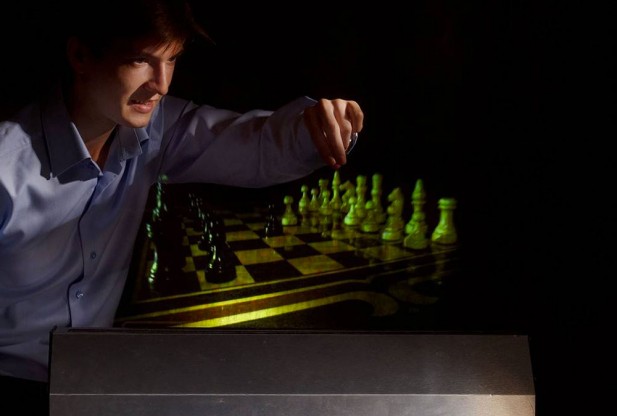Could television sets and computer monitors one day be replaced by visual displays created using mist? That's the goal of one Russian firm that has dubbed their unique displays "the next step in visual technology," according to
CNN.
The company, Displair, and its creator, Max Kamanin, are working on next-gen visual displays that will feature "interactive images floating in mid-air," CNN's Arion McNicoll and Monique Rivalland wrote. Having grown weary of "electronic junk" such as TVs and monitors, Kamanin said that he wanted to create a way for users to view and interact with visual data without having to use actual physical objects.
To accomplish this, Displair is developing a method that essentially projects three-dimensional images onto sheets of mist, effectively creating what appears to be a hologram, McNicoll and Rivalland said. Tiny, moisture-less water drops are used to create an airstream, and the images will be projected onto those droplets, Kamanin explained.
No special glasses will be required to use the screen system, since the images will be projected onto an invisible screen that can respond to a reported 1,500 hand movements similar to those currently used on smartphones and tablet computers. While companies such as Google and Coca-Cola are currently using this type of technology for advertising purposes, Kamanin said that he could see the devices being used for more practical purposes.

© Displair
"A heart surgeon could see in the air a patient's heart and could blow it up and search for information immediately without having to wash his hands," he told CNN, adding that the product could also "be used as a public terminal for extracting necessary information such as timetables and restaurant menus. It means that in the future when bigger displays are created numerous people can use Displair at the same time, play games and search for information."
As Leo Kelion of
BBC News reported earlier this year, Displair had their products on display at the International CES global consumer electronics and technology tradeshow in Las Vegas. Kelion explained that the technology used built-in cameras and software algorithms to analyze a person's hand movements so that he or she can manipulate the image they are looking at.
"Volunteers have been able to use it to play Fruit Ninja, karate chopping the video game's virtual pineapples and bananas in half," Kelion said. He added that "the prototype's image quality" wasn't "good enough to watch a show or movie" at that time, but the company vowed that it would improve - and Displair spokeswoman Kim Terca emphasized that their unit was "a greener option" than traditional televisions and monitors.
The company is reportedly capable of producing 40- to 140-inch screens, and the systems will cost an estimated $4,000 to $30,000. Displair's efforts have previously been commended by Russian President Dmitry Medvedev, and they have also been
awarded the TechInnovations Award for their work on the device.
before it will compete with a back- lit hi-res image. I was puzzled by the phrase "moisture-less water drops are used to create an airstream" . Typically moisture indicates the amount of water in the air "humidity". Could they be using something other than water to create the reflective particles? It may be a while before we see something that is really practical and can produce an opaque solid image. Oh well, back to the drawing board.